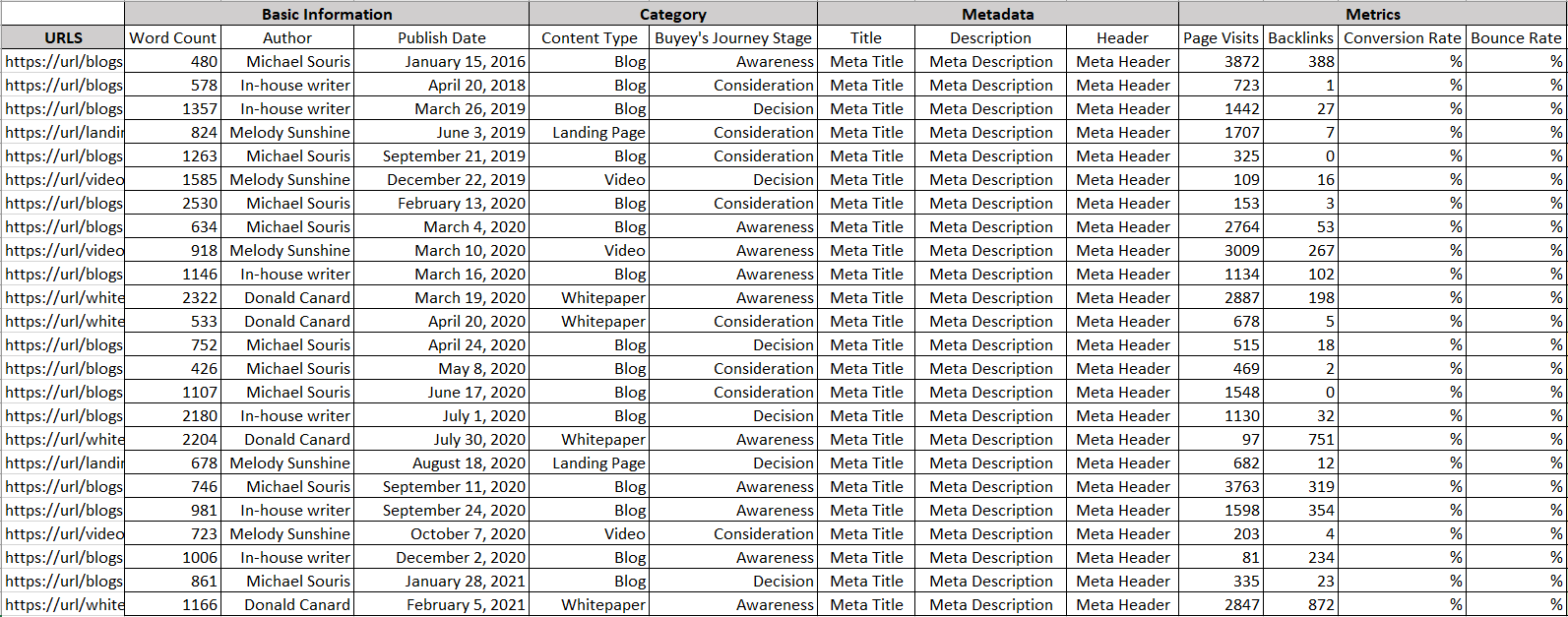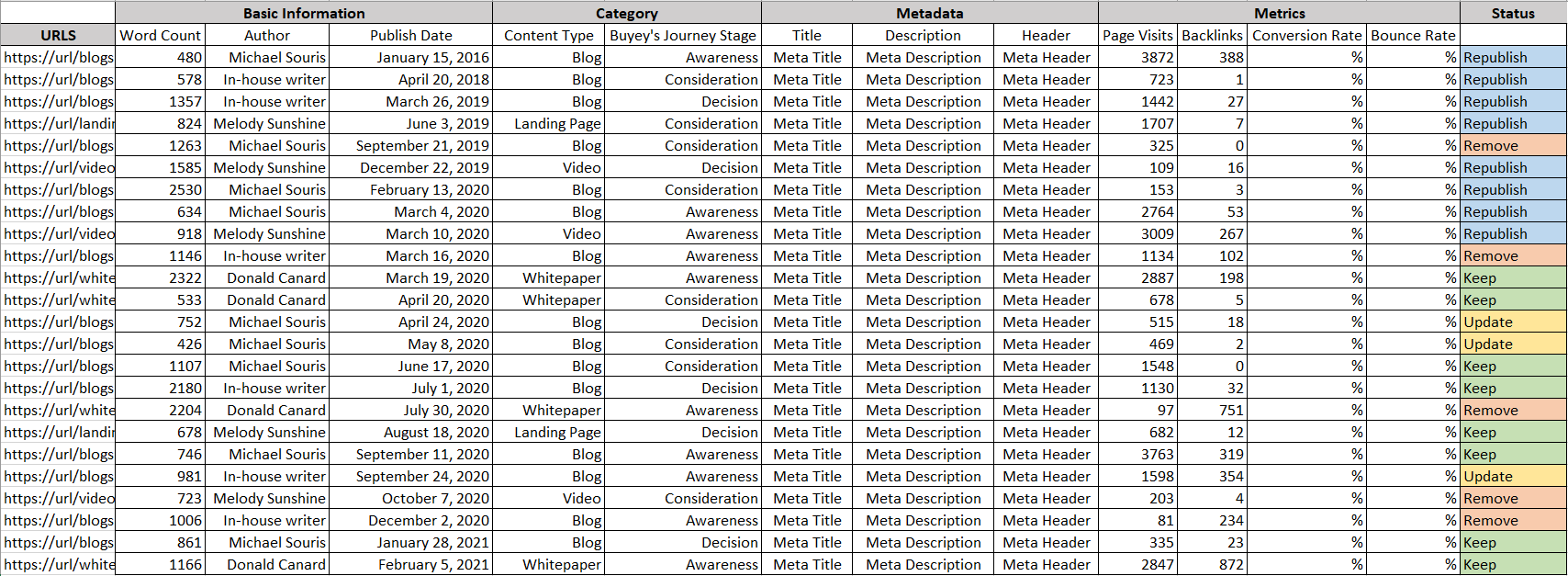Clear the Clutter: 3 Steps to Conducting a Content Audit


March 16, 2023
Like a teenager’s dirty laundry, outdated content has the tendency to pile up on your website. You don’t do it intentionally, but with the amount of content produced week to week, especially after the last few years where communication amplified across channels, content can easily accumulate.
Now is the perfect time to take out the rubber gloves, mop, and duster – figuratively speaking – and give your website a proverbial Spring Cleaning. A thorough content audit will not only clear the clutter, leaving your website organized and easy to navigate, but provide insights into your content marketing strategy, revealing the strengths and weaknesses and how to improve future performance.
Step 1: Where to start.
Since our youth, we’ve had an aversion to doing chores. Conducting a content audit can be tedious, not to mention time-consuming; however, there are many benefits you could be missing out on if you prolong this task.
Start with the end in mind. What do you want to accomplish? Setting clear, defined goals will help simplify the process and make things more manageable. Here are some examples:
For measuring purposes, be sure to align your objectives with relevant content metrics. For instance, SEO is tracked by organic traffic, backlinks, and keyword rankings. Audience engagement is based on user behaviors such as pageviews, average session duration, and bounce rates. And conversions are quantified by number of leads, return on investment (ROI) and other sales metrics.
Step 2: What to clean.
Once you’ve established what you’re working toward, you’ll need to determine what content you want to clean up. The best way to do this is to create an inventory by compiling a list of URLs and related data into a spreadsheet. Depending on the size of your website you can do this manually, outsource to a 3rd party, or use an online tool.
If you decide to do this on your own, here’s a quick guide for what information to collect and how to format your spreadsheet:

Step 3: Get to work.
At this point, you’re ready to assess how your content is performing (AKA what’s working, what needs improvement, and what needs to go in the trash bin). Add a new column on your spreadsheet labeled ‘Status’ and assign one of the following:
Note: Content with an original publish date of more than a year should be republished

Evaluate each piece of content individually and consider all associated content metrics as you decide what to keep, update, or remove. Just because one metric is high or low doesn’t mean it’s good or bad. Here are a few scenarios you may come across and how to properly assess.
Scenario 1: A landing page receives a high volume of traffic but also has a high bounce rate and low session time. This shows users are interested in the topic since they visited the web page; however, quickly leave. There are several reasons why this could happen, including slow page load time, invalid CTA or irrelevancy, meaning the content did not answer their question or solve their problem.
Scenario 2: After completing your content audit spreadsheet, you notice you have a lot of blog articles but little to no videos, case studies or other types of content. Additionally, most of your content is for the ‘awareness’ stage of the member or prospect’s journey and you only have a couple pieces of collateral for later down the funnel. An imbalance of content type or content related to the journey stage can cause a disconnect and result in loss of business. It’s best to offer a variety of content.
Scenario 3: You notice a skew in performance based on member/prospect’s stage. For example, ‘awareness’ content generates a lot more site visits than conversions while ‘decision’ content receives less traffic and higher conversion rates. This is normal since each stage of the journey has a different objective.
To finalize your action plan, be sure to go back to the goals you set at the beginning of your content audit as they will help determine your priorities. If you were looking to improve your SEO, identify what keywords each blog is currently ranking for by analyzing your Google analytics. Posts that rank under the top three for their target keyword are good candidates for republishing. Create a keyword strategy for each blog so that you can optimize the content to achieve your goals. If you wanted to boost audience engagement, experiment with new content types like infographics, videos, or podcasts which typically generate more likes, shares, comments and mentions. If the goal was to increase conversions, optimize internal linking to lead buyers to the next stage. ‘Awareness’ content should link to ‘consideration’ content and ‘consideration’ content should link to ‘decision’ content.
Cleaning is never something we look forward to, but with these tips on how to conduct a content audit, you’re well on your way to a well-kept website that is sure to bring more traffic, greater engagement, and higher conversions!
How many emails are you getting each day? Based on that number, how many emails do you think our members – and prospects -- are receiving? We ask...
MoreIn an era where innovation and adaptability are keys to thriving, your organization deserves a partner that understands your unique challenges and...
MoreMarch Madness is back in full swing, with Selection Sunday set for March 17th! This thrilling wave of competition, passion, and brand recognition...
MoreComplete the form and we'll connect with you right away.
You are now in accessibility mode. To restore settings to default, click the accessibility icon on the right hand side.